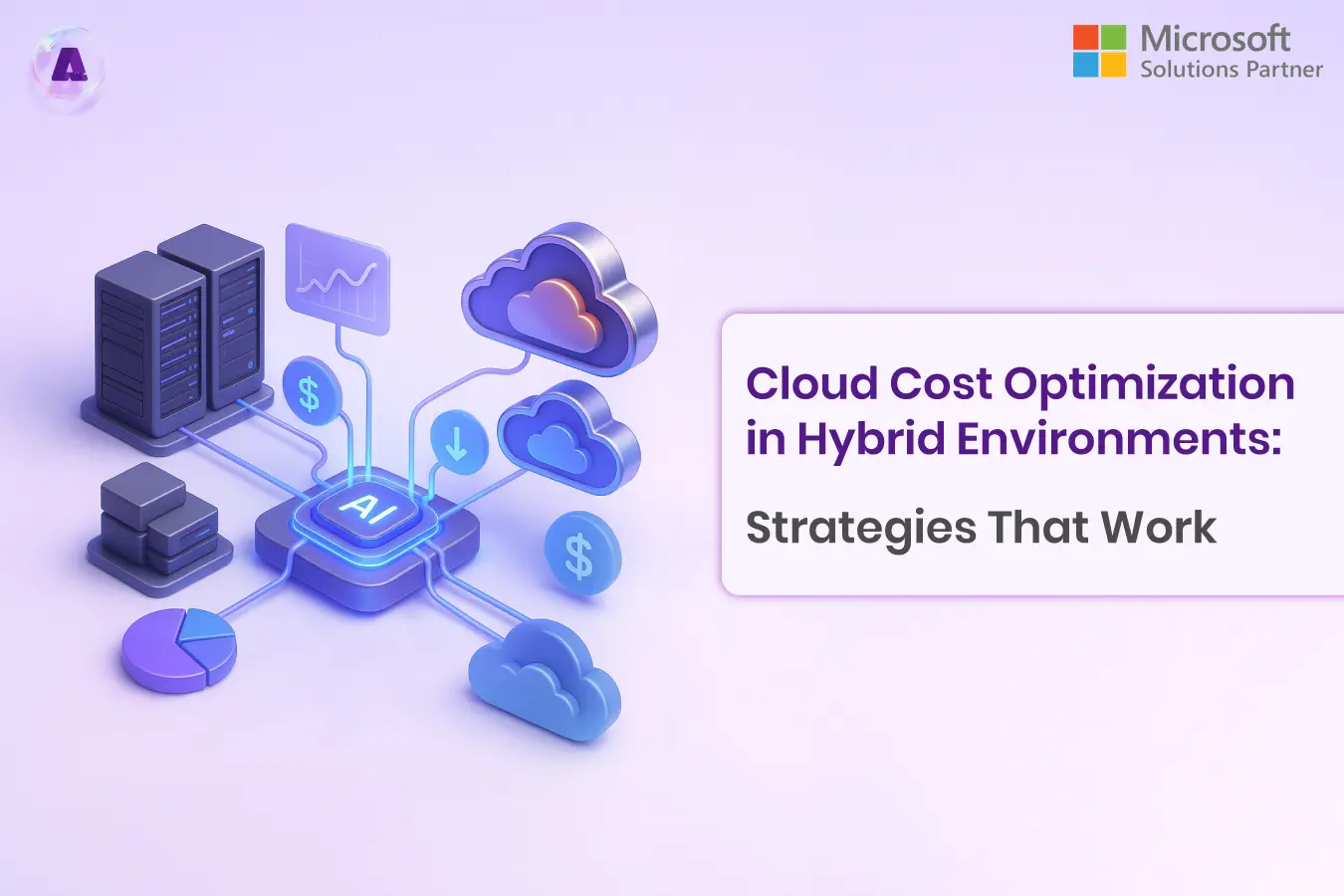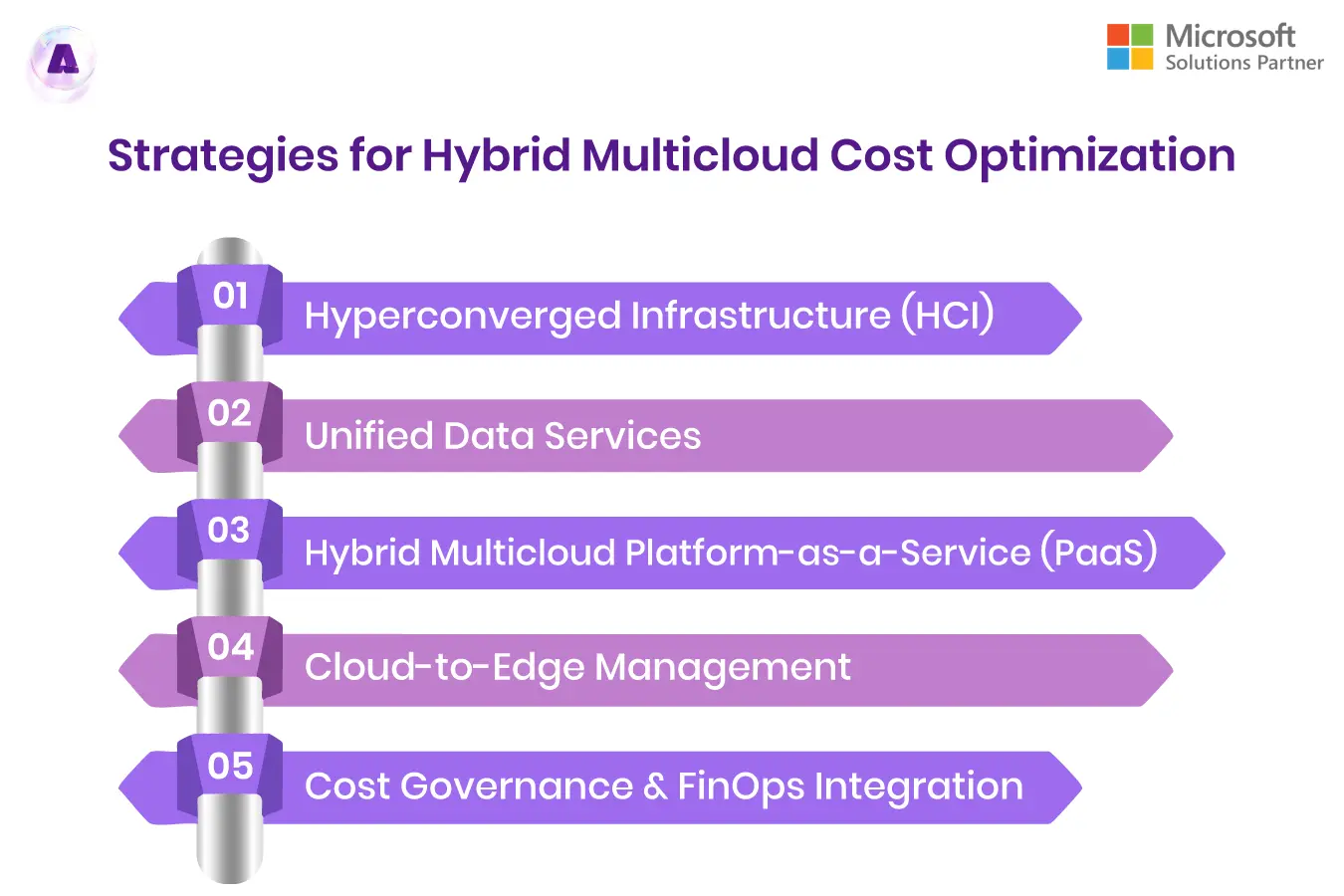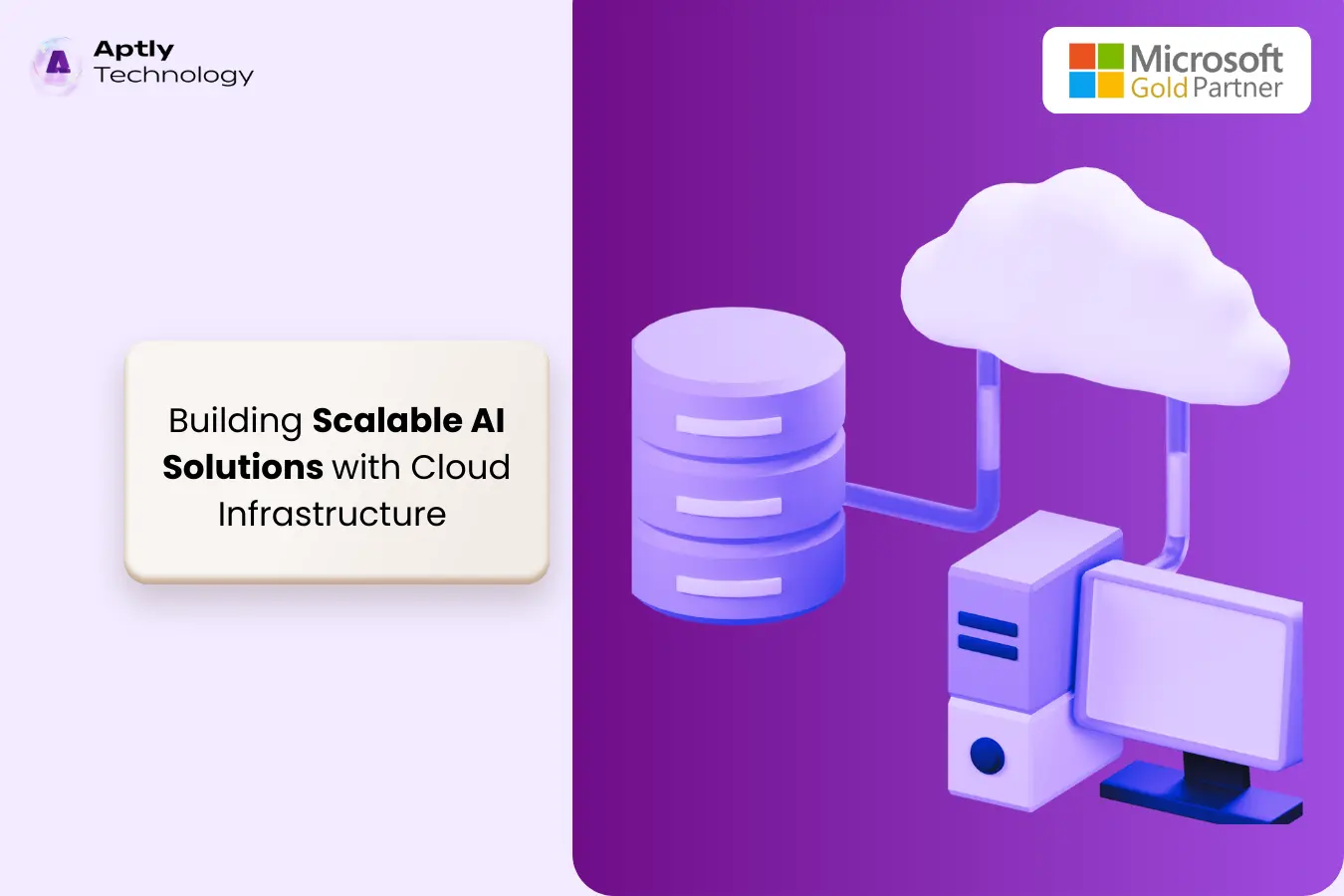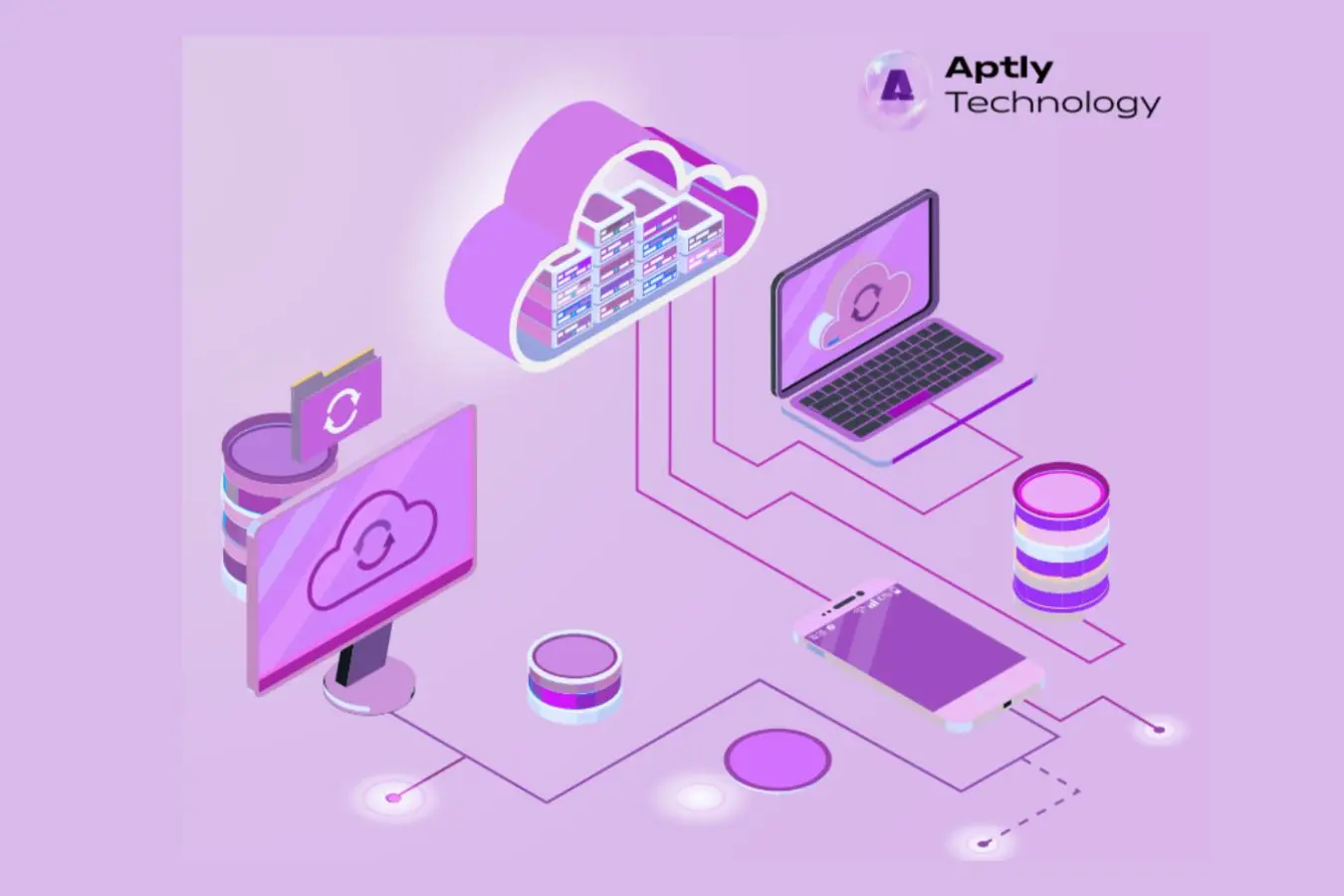
Introduction
Cloud cost optimization is becoming a top priority as organizations increasingly adopt hybrid and multicloud strategies to balance agility, performance, security, and cost. In today’s cloud-first world, organizations are increasingly turning to hybrid and multicloud strategies to strike the right balance between agility, performance, security, and cost. According to the 2021 Hybrid Cloud Report by NTT, 94% of businesses said hybrid cloud deployments are now central to their business strategy and essential for addressing immediate needs. While goals such as business continuity, resilience, and agility continue to drive adoption, cost efficiency has emerged as the most critical factor influencing cloud architecture decisions.
In parallel, Gartner forecasts that by 2025, more than 50% of enterprise IT spending in key market segments will move to the cloud—making cost optimization not just a best practice, but a business imperative.
So how can organizations control cloud costs while scaling efficiently across hybrid environments?
Let’s explore five powerful hybrid multicloud cost optimization strategies that leading enterprises are already putting into action.
Read on to discover proven methods, real-world insights, and practical tools to optimize your cloud investments.
Five Proven Strategies for Hybrid Multi Cloud Cost Optimization – In Depth

1. Hyperconverged Infrastructure (HCI)
What It Is:
Hyperconverged Infrastructure (HCI) consolidates compute, storage, and networking into a single, software-defined solution that can be centrally managed. It replaces traditional, siloed infrastructure and is designed to scale easily and efficiently ideal for hybrid cloud environments.
How It Optimizes Cost:
- Reduces CapEx by eliminating the need to purchase separate physical servers, storage arrays, and networking equipment.
- Simplifies operations, reducing the need for large IT teams to manage separate components.
- Enables scalability, so organizations can grow incrementally based on demand, avoiding overprovisioning.
Real-World Insight:
According to the 2023 Nutanix Enterprise Cloud Index, 93% of organizations have deployed or plan to deploy HCI within two years due to its operational simplicity and cost-efficiency. HCI solutions like Nutanix, VMware vSAN, and Microsoft Azure Stack HCI allow businesses to build private cloud capabilities that integrate seamlessly with public cloud platforms.
2. Unified Data Services
What It Is:
Unified Data Services create a single control plane for managing data across on-premises, public cloud, and edge environments. It brings consistency in how data is stored, accessed, secured, and moved across diverse platforms and locations.
How It Optimizes Cost:
- Eliminates data duplication, reducing storage costs.
- Improves visibility, enabling smarter decisions on where to store and process data based on cost and performance.
- Supports data mobility, so workloads can move across clouds without high egress or replication fees.
- Enhances compliance, avoiding regulatory fines or unnecessary third-party security tools.
Real-World Insight:
Nutanix’s approach to unified storage supports file, block, and object storage in hybrid and multicloud environments, along with integrated Kubernetes support. Thomas Cornely, Nutanix SVP, emphasized the need for “a single operations layer” that gives IT control while enabling developer agility.
3. Hybrid MultiCloud Platform-as-a-Service (PaaS)
What It Is:
Hybrid Multicloud PaaS allows organizations to build, run, and scale applications without managing the underlying infrastructure. It supports cloud-native development, microservices, and containerization while providing the flexibility to run workloads across private and public clouds.
How It Optimizes Cost:
- Avoids upfront infrastructure costs by using pre-built, scalable platforms.
- Improves developer productivity by providing ready-to-use environments.
- Enables elastic scaling, so you only pay for what you use.
- Reduces vendor lock-in through multicloud portability.
Real-World Insight:
Microsoft Azure App Service and Azure Kubernetes Service (AKS) provide developer-ready platforms that abstract away infrastructure concerns. Organizations can also utilize Azure Functions for serverless execution—only paying for actual compute time.
4. Cloud-to-Edge Management
What It Is:
Cloud-to-edge management platforms enable IT teams to control infrastructure and services across centralized data centers, public clouds, and remote/edge locations. This ensures consistency in performance, security, and governance.
How It Optimizes Cost:
- Minimizes latency, reducing the need for expensive data backhauling.
- Improves performance for remote users and applications.
- Simplifies administration with one control plane across edge, cloud, and on-prem.
- Avoids siloed infrastructure, preventing duplicate tools, licenses, or configurations.
Real-World Insight:
Microsoft Azure Arc allows centralized management of Windows/Linux servers, Kubernetes clusters, and data services across environments—offering pay-as-you-go licensing for SQL Server, security policy enforcement, and cost monitoring via Azure Cost Management.
Gartner predicts that distributed cloud models will become standard for enterprises requiring data sovereignty, low-latency operations, and edge processing (Gartner Distributed Cloud).
5. Cost Governance & FinOps Integration
What It Is:
Cost governance involves tools and policies for tracking, managing, and optimizing cloud spend across services, teams, and environments. FinOps (Financial Operations) frameworks guide this process by combining finance, engineering, and operations to drive accountability and transparency.
How It Optimizes Cost:
- Detects idle and underutilized resources, recommending rightsizing or deletion.
- Automates budgeting, alerting, and forecasting.
- Provides per-department spend reports, helping teams stay accountable.
- Enables reserved instance planning, avoiding over-reliance on costly pay-as-you-go pricing.
Real-World Insight:
Azure Cost Management + Billing is free for Azure customers and supports budgeting, usage reports, and export to tools like Microsoft Fabric or Power BI. It also integrates with Azure Advisor for cost-saving recommendations.
Nutanix Cloud Manager provides detailed multicloud spend insights, policy-based automation, and rightsizing recommendations.
Walmart’s cloud team shared that automated cleanup and proactive monitoring of unused volumes and VMs was essential in scaling cloud usage efficiently (Walmart Global Tech Blog).
Conclusion
Cost optimization in hybrid environments is a multi-layered challenge—but with the right combination of strategy, tools, and expert support, it becomes a business accelerator.
By leveraging proven solutions like hyperconverged infrastructure, unified data services, PaaS, cloud-to-edge orchestration, and cost governance platforms, organizations can not only reduce spend but also increase agility, scalability, and operational excellence.
With Aptly Technology as your hybrid cloud partner, you can confidently align your IT investments with business value, ensure long-term sustainability, and stay ahead in an increasingly multicloud-driven world.





